Juniper (Juniperus communis) Profile
Written by Iris
Aug 06 2021
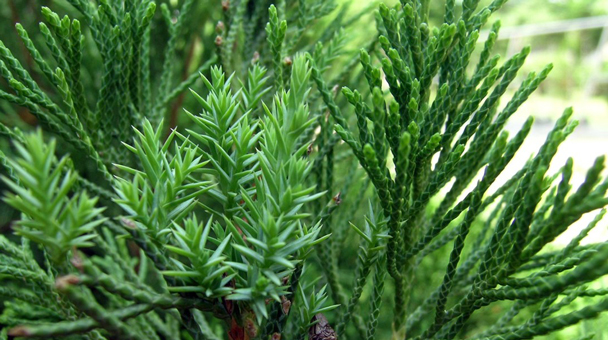
Juniper trees belong to the cypress family and are common worldwide because they are hardy and grow well in all climates. Unlike many other types of plants, junipers can grow as both trees and shrubs. Coniferous evergreens have small, needle-like or scalelike leaves and are extremely versatile, making them ideal for use in almost any landscape design, and juniper trees are relatively easy to care for. However, they do require a lot of sunlight to grow properly, and require well-drained soil -- which means juniper grows well in sandy soil. They also have the advantage of growing well in both acidic and alkaline soils.
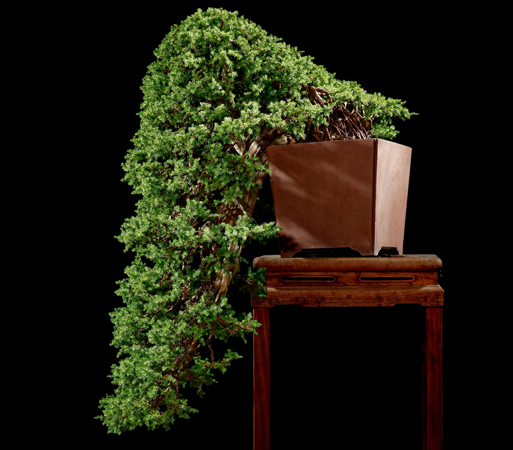
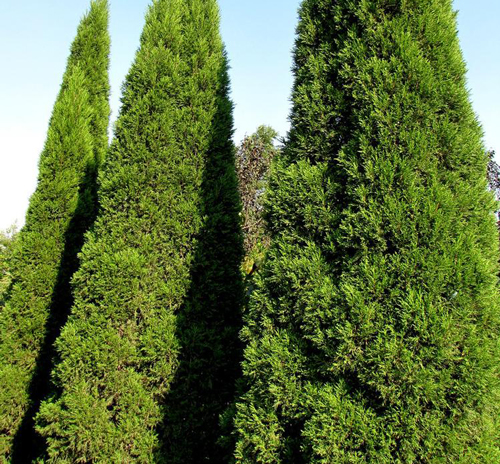
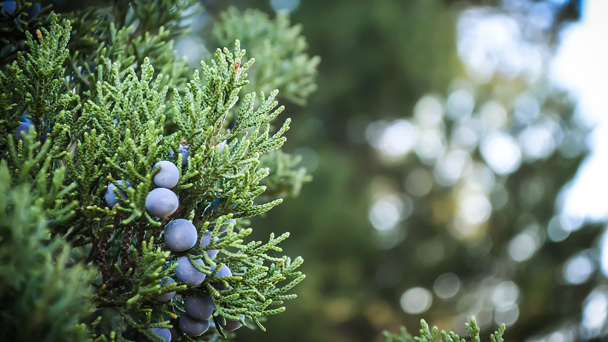

Juniper has medicinal value. Juniper has been used to treat a very wide range of ailments. If a major medicinal use could be identified, it would probably be its use as a tonic to maintain health. Hundreds of years ago, Europeans added Juniper to gin, and made a liqueur called Junivere from the berries. Many gins still have a minute amount of Juniper in it today. So, "Bottoms up" and "Here's to your health!"
Medicinally, Juniper has been used for:
Used as a general tonic for health
An antibiotic to treat wounds and sores
To avoid malaria
Kidney health
Liver health
Used as a diuretic
Gynecological health
Inflammations
Easing childbirth
Muscle spasms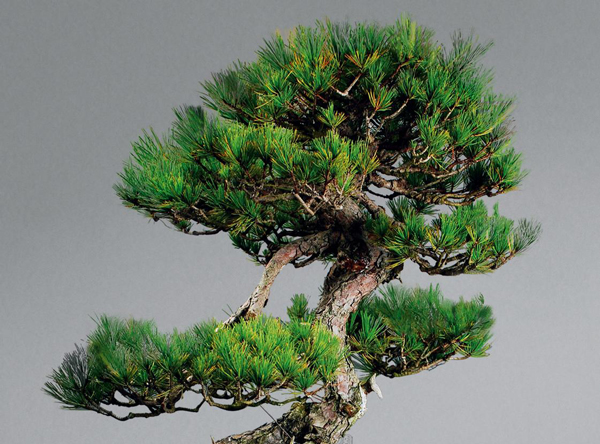
Juniper horizontalis ‘Wiltonii’ – striking silvery blue needles that turn purple in winter cold; this variety is female and will produce light blue berries; performs well in southern heat
Juniper x pfitzeriana ‘Compacta’ – a low growing, spreading shrub; attractive gray-green foliage
Juniper procumbens ‘Greenmound’ – produces a soft green undulating mat of growth
Juniper procumbens ‘Nana’ – this dwarf form tends to mound upon itself, resulting in a mounding habit; an excellent spreader
Juniper squamata ‘Blue Star’ – dramatic blue foliage stands out in the landscape; this variety grows low and slow; languishes in humid environments
Narrow Selections
Juniper chinensis ‘Spartan’ – excellent narrow, columnar or slightly cone shaped habit, but can be a bit shorter and wider given environmental conditions
Juniper virginiana ‘Brodie’ – a tightly columnar form; new summer growth is soft green, fading to sage in the winter; a female variety that will produce attractive berries rather than allergy-inducing pollen; poor root system makes this variety more susceptible to wind damage
Juniper virginiana ‘Taylor’ – this narrow form is an excellent alternative to Italian cypress; silvery blue-green foliage that may bronze in the winter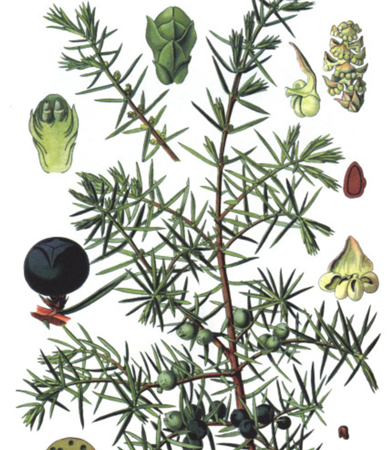
Juniper (Juniperus communis) PictureJuniper (Juniperus communis) InfoEcological Habits of Juniper (Juniperus communis)Juniper (Juniperus communis) Distribution AreaHow to Grow and Care for Juniper (Juniperus communis)Juniper (Juniperus communis) Extraction and storageUses of Juniper (Juniperus communis)Varieties of Juniper (Juniperus communis)Juniper (Juniperus communis) Common Pests/Diseases
Juniper (Juniperus communis) Picture

Juniper (Juniperus communis) Info
| Botanical Name | Juniperus communis |
| Common Name | Common juniper |
| Plant Type | Evergreen conifer |
| Mature Size | 2-50' tall |
| Sun Exposure | Full sun |
| Soil Type | Well-draining |
| Soil pH | Not particular |
| Bloom Time | Winter |
Ecological Habits of Juniper (Juniperus communis)
Common juniper is a typical shrub species of poor soils and harsh environments. It is drought and cold tolerant but requires plenty of light. It can grow on acidic sandy or calcareous soils and favours free-draining soils and rocky outcrops. In many areas, juniper is considered to be a pioneer species, able to colonise bare terrain and a range of soil types. The subspecies Juniperus communis ssp. alpina occurs in a narrow band above or north of the treeline.Juniper (Juniperus communis) Distribution Area
Common juniper has the widest distribution range of all conifers, and can be found throughout the Northern Hemisphere: in North America, Europe, and Asia. It is the most northerly of the juniper species and one of the most northerly conifers in the world10. In Europe, it can be found from northern Scandinavia to parts of southern Spain, although at more southern latitudes it is usually confined to mountain areas. Juniper grows in low elevations in pasture lands and abandoned fields, as well as at high elevations, above the treeline in Eurosiberian mountains.
How to Grow and Care for Juniper (Juniperus communis)
How to Grow Juniper (Juniperus communis)
The most reliable ways to obtain junipers for your garden are by taking a cutting, air layering, or by purchasing a seedling. It's technically possible to grow juniper from seed, but it's not recommended. Planting by seed requires up to four years before you’ll have a shrub you can transplant, and the process isn't easy. Germination is unreliable, and the seeds require a lengthy stratification period.How to Care for Juniper (Juniperus communis)
- Light
- Soil
- Water
- Temperature and Humidity
- Fertilizer
- Pruning

Juniper (Juniperus communis) Extraction and storage
Extraction of juniper seeds from the cones, which contain between one and three seeds is difficult. The cones are very resinous and hold on to the seeds more than most fruits, so a more dramatic method is used. Add a small number of cones and plenty of warm water (at least the same volume of cones) to a blender and run at a speed that is just enough to break up the cones – too fast and you’ll damage the seeds. Pour into a bucket, add more water (as a jet if possible) and leave to stand for a couple of minutes. The good seed sinks and all the debris floats to the top. Pour this away as per the method for berries. Pour the good seeds back into the blender, add plenty more water and a teaspoon of detergent and run the blender again for a few minutes. Pour off the debris again and save the seed. Let it dry somewhere warm and store in paper bags.
Uses of Juniper (Juniperus communis)
Juniper is amongst the most useful multi-purpose shrub species worldwide. Containing a large number of essential oils, extracts from its twigs, leaves, and berries (the blue-black seed cones) have been used as traditional remedies against urinary infections, dermatitis, or as a diuretic. The wood has even been shown suitable for artificial bone implants. The twigs, leaves, and especially the berries represent an important food source for several small and large animals, such as birds, deer, elk, cattle, horses and sheep2, and humans use the berries forculinary purposes and for the preparation of alcoholic drinks, such as flavouring gin.Juniper has medicinal value. Juniper has been used to treat a very wide range of ailments. If a major medicinal use could be identified, it would probably be its use as a tonic to maintain health. Hundreds of years ago, Europeans added Juniper to gin, and made a liqueur called Junivere from the berries. Many gins still have a minute amount of Juniper in it today. So, "Bottoms up" and "Here's to your health!"
Medicinally, Juniper has been used for:
Used as a general tonic for health
An antibiotic to treat wounds and sores
To avoid malaria
Kidney health
Liver health
Used as a diuretic
Gynecological health
Inflammations
Easing childbirth
Muscle spasms

Varieties of Juniper (Juniperus communis)
There are a multitude of Juniperus varieties available from local garden centers and specialty nurseries. A few popular ones are described below.Juniper horizontalis ‘Wiltonii’ – striking silvery blue needles that turn purple in winter cold; this variety is female and will produce light blue berries; performs well in southern heat
Juniper x pfitzeriana ‘Compacta’ – a low growing, spreading shrub; attractive gray-green foliage
Juniper procumbens ‘Greenmound’ – produces a soft green undulating mat of growth
Juniper procumbens ‘Nana’ – this dwarf form tends to mound upon itself, resulting in a mounding habit; an excellent spreader
Juniper squamata ‘Blue Star’ – dramatic blue foliage stands out in the landscape; this variety grows low and slow; languishes in humid environments
Narrow Selections
Juniper chinensis ‘Spartan’ – excellent narrow, columnar or slightly cone shaped habit, but can be a bit shorter and wider given environmental conditions
Juniper virginiana ‘Brodie’ – a tightly columnar form; new summer growth is soft green, fading to sage in the winter; a female variety that will produce attractive berries rather than allergy-inducing pollen; poor root system makes this variety more susceptible to wind damage
Juniper virginiana ‘Taylor’ – this narrow form is an excellent alternative to Italian cypress; silvery blue-green foliage that may bronze in the winter

Juniper (Juniperus communis) Common Pests/Diseases
Common junipers are susceptible to a number of common pests and diseases. Watch out for diseases such as juniper blight, twig blight, and cedar apple rust - all of which can be handled with prompt and aggressive pruning. Common pests of the common juniper include bagworms, juniper scale, aphids, and more. Checking the shrub over semi-annually for signs of pests and using an insecticide when needed should keep any major infestations under control.Juniper (Juniperus communis) Companion Plants
When you are looking for juniper plant companions, think about bamboo. Bamboo species, particularly dwarf bamboo plants, are also good choices for juniper companion plants. Tall bamboo mixes well with tall junipers, while groundcover juniper blends seamlessly with dwarf bamboo.Latest Updated
- Benefits of Bugleweed - 7 Science-backed Health Benefits
- Bugleweed Dangers & Side Effects - Is It Poisonous?
- How to Plant Evergreen Trees - What You Should Know
- When to Plant Evergreens - Grow Guide for Evergreen Trees
- 12 Wonderful Evergreen Shrubs for Your Garden
- 12 Popular Evergreen Plants with Pictures for Beginners
- When And How To Prune A Lilac Bush Like a Pro
- How to Grow & Care for Lilac Vine (Hardenbergia Violacea)
- Japanese Lilac Tree (Syringa Reticulata) Care & Propagation Guide
- Shumard Oak Pros and Cons - What to Know
Popular Articles
- Winter maintenance of Antirrhinum Majus
- How to Grow Terminalia Mantaly Tree
- How to Grow and Care for Crossostephium Chinense
- How to grow Antirrhinum Majus in spring
- Peristeria Elata (Dove Orchid) Profile: Info & Care Guide
- Underwatered Snake Plant (Sansevieria Trifasciata) - Signs And How To Fix
- How to Care for Brazilian Jasmine Plant (Mandevilla Sanderi)
- How to Grow & Care for Graptopetalum Purple Delight in Summer
- Rosa Chinensis (China Rose): Plant Growing & Care Tips
- How to Care for Baby Sun Rose (Aptenia Cordifolia)